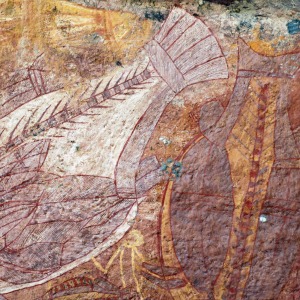A coming of age
One of the later areas of law to have developed in Australia, native title law is often discussed in the context of our nation’s coming to terms with the reconciliation process. Now that a number of landmark native title decisions have been handed down, a clearer form of native title law has emerged.

More claims to flow from a maturing body of law
Some experts suggest that as native title takes a more defined shape, it is slowly but surely starting to achieve what its enacting legislation intended in 1993 – legal redress for the erosion of Indigenous land rights across Australia.
Ashurst partner Tony Denholder leads the firm’s resources practice in Brisbane. The native title specialist identifies three main aims that the Native Title Act set out to achieve when it was enacted more than 20 years ago, following the High Court’s historic Mabo decision.
According to Mr Denholder, the act creates an avenue for Indigenous people to prove their native title rights in court. It aims to ensure those rights and liabilities are recognised into the future, and also provides a way for recognised rights-holders to seek compensation for native title rights that have been extinguished or impaired.
Gilbert + Tobin litigation partner Marshall McKenna agrees with the assessment that the law recognised native title rights in three stages, adding that those three objectives have emerged over the course of time. Mr McKenna believes that lawyers specialising in the area are currently in the midst of the “third wave of native title claim”, referencing the recent Federal Court decision in August of Griffiths v Northern Territory, also known as the Timber Creek case.
“What has come alive in the Timber Creek case is that once Aboriginal groups prove they have native title, it allows them to go to court and ask a judge to determine what compensation they should receive for any of their rights which have been extinguished or impaired since 1975,” Mr Denholder says.
Racial discrimination laws came into effect in October 1975, after which time compensation had to be paid to claimants if their native title interests were affected by a government-issued grant.
Earlier this year the Federal Court determined a $3.3 million compensation award to the native title owners of Timber Creek, 600 kilometres south-west of Darwin.
While the payout to the Ngaliwurru and Nungali people is being appealed by the Northern Territory government, the Griffiths case is the first time in the history of the Native Title Act that a court has approached the question of how to go about determining such compensation.
“It is really interesting that a much larger component of the compensation [in the Griffiths case] was based on that non-tangible element in addition to the land value.
“This was a very difficult decision for the Federal Court judge because the Native Title Act gives very limited guidance on what or how to value native title rights,” Mr Denholder says.
According to the Ashurst partner, the decision in the Griffiths case is a native title milestone because it also signifies a maturation of this particular area of law. He predicts that we can expect to see more recognised rights-holders come forward to ask courts to determine and quantify the compensation to which they are entitled. This means more work for native title lawyers on the whole and, in his view, will have implications for other transactional legal work where land subject to native title may be involved.
“I would expect this decision to open the floodgates to many compensation applications now being lodged around the country,” Mr Denholder says.
“Aboriginal groups will no doubt do a forensics exercise to see how their rights have been affected over the last 40 years and make a claim for compensation. A claim for those rights has always been envisaged by the Native Title Act. This is the legitimate next stage of the native title journey.”
Strong appetite for native title specialists
With more than 300 different Indigenous groups having successfully claimed native title, only 30 claims for native title compensation have been made overall. Of those, 20 have been discontinued, nine dismissed, two withdrawn and there have been three approved determinations.
Two of the approved determinations, claims over Barkindji in NSW and De Rose Hill in South Australia, were settled between the parties. The Griffiths case, now on appeal, is the only other approved determination in the history of native title law.
Add to this landscape a range of scenarios where no two land parcels or groups of Indigenous claimants are alike, and it is clear that the approach adopted by the Federal Court will be considered on a case-by-case basis.
Mr McKenna, who flags that the case is of particular interest to G + T’s property and projects practice, says the Griffiths case piqued a predominantly academic interest among native title lawyers. He says all eyes are focused on the legislation introduced to support the flow-through compensation from the state to the holders of tenure.
“Most of the projects done by reputable mining companies have already got a compensation regime in place,” he explains.
Mr McKenna agrees that the decision is likely to create more work for native title lawyers, suggesting that half of the possible native title claims in Australia are yet to progress from grant to determination.
“The first step is to go through the process of establishing native title and the people who are engaged in that are going to continue to be engaged in that over the next 10 or 15 years, in my assessment.
“On top of that there’s a new challenge, which is to assess whether and how much native title has been extinguished in what I’d call the compensation period, and then to assess what that’s worth,” he says.
In Mr McKenna’s view, lawyers advising on projects in the resources, agriculture and infrastructure sectors need to anticipate the way the chips will fall in the Griffiths appeal, as this will also inform future native title claims.
Mr Denholder suggests that the wide variation when it comes to the methods of deciding native title compensation will also inform the way lawyers representing both sides negotiate settlement agreements.
“This is very much early days and I think the implications of Griffiths will emerge over the coming weeks and months as everyone, including lawyers, better understand the judgment itself and the broader implications for all of the country,” he says.
